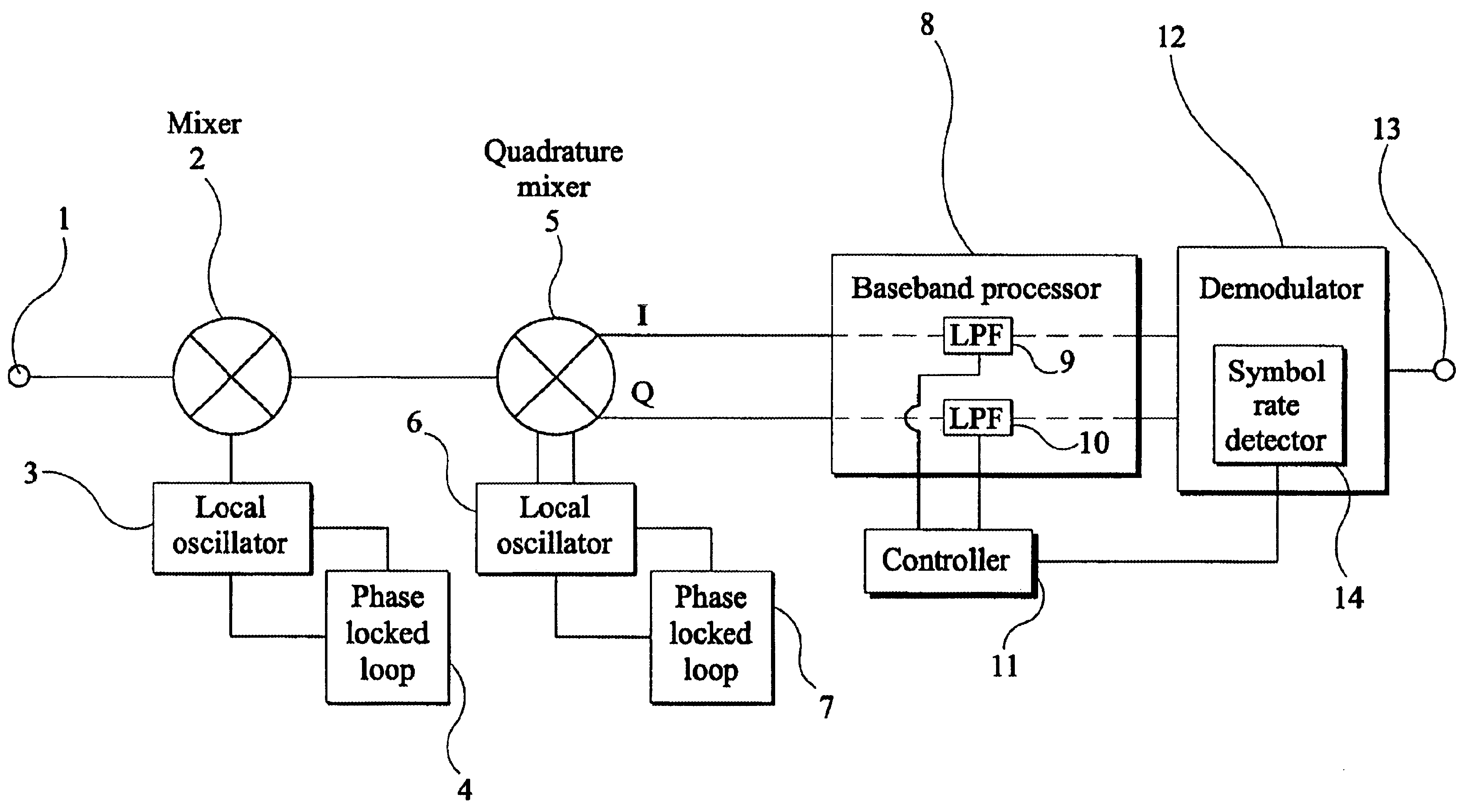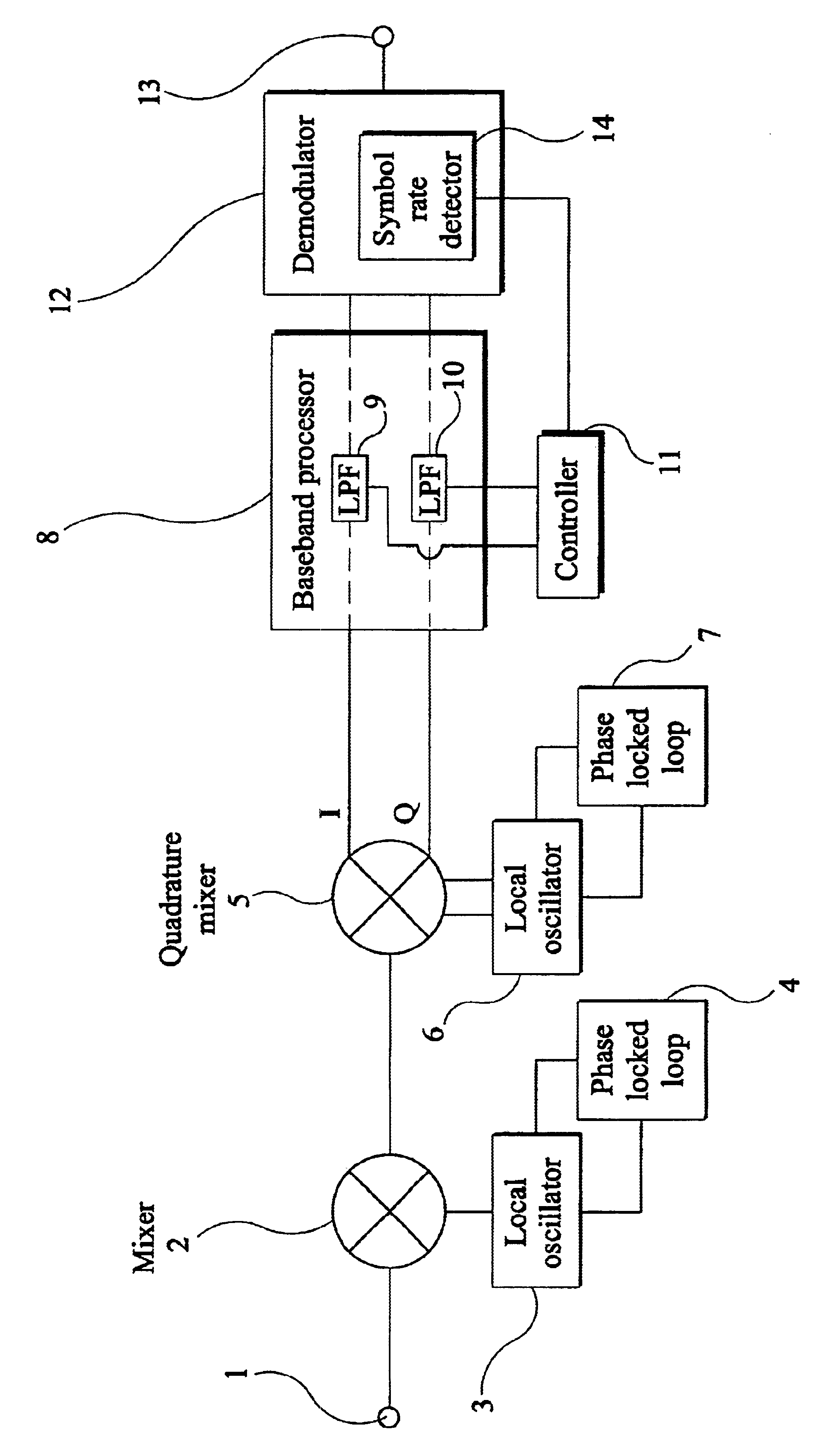Digital tuner
a digital tuner and tuner technology, applied in pulse technique, phase-modulated carrier system, line-fault/interference reduction, etc., can solve problems such as unusable rendering techniques
- Summary
- Abstract
- Description
- Claims
- Application Information
AI Technical Summary
Benefits of technology
Problems solved by technology
Method used
Image
Examples
Embodiment Construction
[0014]The tuner comprises an antennae input 1, which may be connected to a cable distribution system, to an aerial or aerial distribution system for terrestrial broadcast signals, or to a satellite dish via a head unit for converting the received frequency range to a lower frequency range. For example, in the case of cable or terrestrial signals, the received frequency range, and hence the required tuning range of the tuner, may typically be from 50 to 860 MHz.
[0015]The antennae input 1 is connected to an upconverter comprising a mixer 2, a local oscillator 3 and a phase locked loop 4. The upconverter 2-4 may be of the type which performs a fixed conversion such that the whole of the frequency range is up converted to a higher frequency range without selecting the desired channel. For example, for the above-mentioned typical tuning range of 50 to 860 MHz, the upconverter local oscillator frequency may be 1.05 GHz and the intermediate frequency bandwidth is then 1.1 to 1.96 GHz. Alte...
PUM
 Login to View More
Login to View More Abstract
Description
Claims
Application Information
 Login to View More
Login to View More - R&D
- Intellectual Property
- Life Sciences
- Materials
- Tech Scout
- Unparalleled Data Quality
- Higher Quality Content
- 60% Fewer Hallucinations
Browse by: Latest US Patents, China's latest patents, Technical Efficacy Thesaurus, Application Domain, Technology Topic, Popular Technical Reports.
© 2025 PatSnap. All rights reserved.Legal|Privacy policy|Modern Slavery Act Transparency Statement|Sitemap|About US| Contact US: help@patsnap.com


